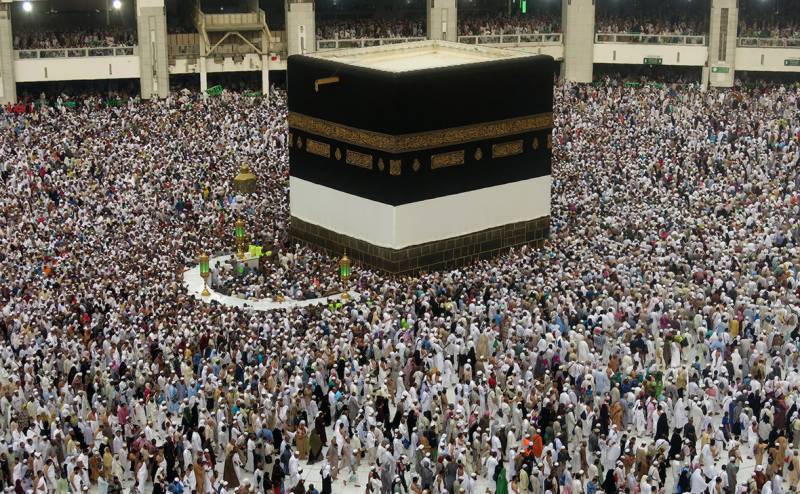Makkah Mukarma (Web Desk/Agencies): Nearly three million pilgrims from over 160 countries, chanting “Labbaik Allahumma Labbaik” in unison, have embarked on their journey from Makkah to Mina as the revered Hajj 1444H (2023 AD) rituals commence.
Prospective pilgrims employed various modes of transportation such as buses and trains, but a significant number chose to follow the tradition of Prophet Muhammad (peace be upon him) and embarked on the pilgrimage by foot to Mina, a narrow valley surrounded by rocky mountains, some five kilometres (three miles) from the Grand Mosque. Some intending pilgrims had gone to Mina late Sunday night.
Donning the same attire of Ihram – two white, unstitched pieces of cloth, kings, princes, ministers, the wealthy, and the common man shed all indicators of social, cultural, and political differences, embodying equality before Allah Almighty.
By stripping themselves of anything that might indicate their social standing, they embody the true essence of Hajj.
After a night spent in Mina, the pilgrims will set off for the Plains of Arafat on Tuesday, just after dawn.
Standing on the sacred grounds of Arafat, “Mount of Mercy”, is the site where it is believed that the Prophet Muhammad delivered his final sermon.
As part of this sacred journey, after sunset on Tuesday, the pilgrims will make their way back from Arafat to Muzdalifah.
As Wednesday (June 28) dawns, marking the joyous occasion of Eid al-Adha for millions of Muslims worldwide, the Hajj pilgrims will partake in the solemn ritual of stoning the devil.
Subsequently, they will honor the memory of Prophet Ibrahim, his noble wife Hager, and their son Prophet Ismael (may peace be upon them all) by offering sacrificial animals.
The next day, they will come down and collect small stones in order to perform the symbolic ritual known as the “stoning of the devil.”
The Hajj, an annual religious gathering of significant magnitude, stands as one of the five fundamental pillars of Islam, obligatory for all financially capable Muslims to undertake at least once in their lifetime.
This year’s pilgrimage marks a notable milestone as it will be the first occasion without the constraints enforced during the global COVID-19 pandemic.
According to the Saudi health ministry, During the Hajj season, 32 hospitals, 140 emergency health centers, 190 ambulances, and a medical staff of 32,000 individuals will provide round-the-clock services to prospective pilgrims.
Saudi authorities have divided Mina into 10 zones. Hajj pilgrims are being transported to the Mina tent village via buses.
A significant number of prospective pilgrims are preferring to follow the tradition of Prophet Hazrat Muhammad (peace be upon him) and are embarking on the pilgrimage by foot to Mina, a narrow valley surrounded by rocky mountains, located approximately five kilometers (three miles) from the Grand Mosque.
Pakistan Hajj Mission has deployed Moavineen-e-hujjaj in Mina, equipped with maps to guide hujjaj to Mina, Muzdalifah, and Arafat. The guiding posts of Pakistani Muavineen has already been established in Mina and Jamarat.
In Mina, two camp offices have been set up by the Pakistan Hajj Mission to provide continuous assistance to prospective pilgrims. These offices will include different departments like lost and found, guidance, complaints, and a monitoring desk, ensuring 24/7 support for the pilgrims.
A shuttle train service will be available to 63% of the Hujjaj during the Hajj days, while the remaining 37 percent will be transported to Mina, Arafat, and Muzdalifah via buses.
The tents allocated for Pakistani pilgrims are located in close proximity to roads numbers 50, 62, and 64.


